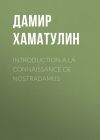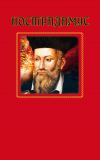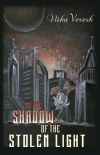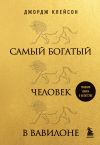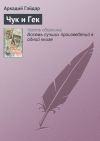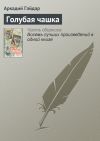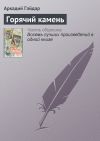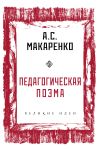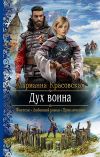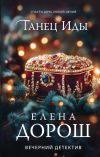Текст книги "Introduction to knowledge about Nostradamus"
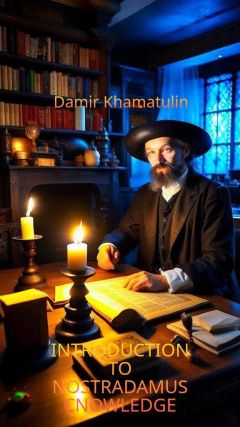
Автор книги: Дамир Хаматулин
Жанр: Биографии и Мемуары, Публицистика
Возрастные ограничения: +16
сообщить о неприемлемом содержимом
Текущая страница: 6 (всего у книги 46 страниц) [доступный отрывок для чтения: 11 страниц]
Near the big river there is a big ditch, the earth is dug out,
The water will be divided into fifteen parts:
The city is taken, fire, blood, screams, conflict
And most of them are involved in conflict.
Nostradamus took a shovel, and divided the streams of river water into fifteen parts. In this quatrain – the fifteenth Centurian river – " fleuue ". There is nothing to add to this, the Author speaks the truth. And then, apparently, he reports on his work already done, suggesting that, in addition to rivers, he involved the words “ cite ”, “ feu ”, “ sang ”, and, at least, “ crys ” into the collision.
I don’t want to waste a lot of paper, in the next quatrain 4-80 there is a phrase: “ sept a ` picque " – literally – "seven in (at) the peak." Exactly seven times in the first cycle of the Centuries the word " picque ( pique )" is used.
___________________________________________________________________________
Quatrain 4-84 seems to me much more interesting.
4-84 Vn grand d'Auserre mourra bien miserable,
Chasse' de ceulx qui soubz luy ont este': Serre' de chaisnes, apres d'vn rude cable, En l'an que Mars, Venus & Sol mis en este'.
The great of Auxerre will die very unhappy,
Cast out by those below him:
Tightened with chains, then with a rough rope,
In a year in which Mars, Venus and the Sun are placed in summer.
In the fourth line of this quatrain – an indication of where to search. The combination of Mars, Venus and the Sun in one quatrain is found only in quatrain 5-25. And it develops a situation similar to quatrain 6-35 with the word CLIMAT assembled from capital letters .
5-25 Le prince A rabe Mars , Sol , Venus , Lyon,
R egne d' E glise par mer succombera:
D euers la Perse bien pr es d'vn million,
Bis an ce, E gip te , ver. serp. inuadera.
Only in this case there is one nuance. The city " AVSERRE " is almost going here, the second capital " R " is missing . I think there is an explanation for this. Auxerre, now – Auxerre , earlier (well, in the 14th century – for sure) was called Ausedre . This is how he is presented in this quatrain: " AVSEDRE "
Another interesting observation. I don't know how unlikely it is to find " es + te " in this quatrain, which make up the words " este '" (see line 4-84), but they are here, as well as, of course, " an ". Of course, this is more like going somewhere away from the right direction, but on paper I will keep it. Would it come in handy?
___________________________________________________________________________
B exactly in the next quatrain, probably something similar.
4-85 Le charbon blanc du noir sera chasse',
Prisonnier faict mene' au tombereau:
More Chameau sus piedz entrelassez,
Lors le puisne' sillera l'aubereau.
Coal white black will be pursued,
The prisoner is dragged in a cart:
Moor Camel on legs bound together,
Then the younger one will sew up the eyelids of the Hobby Falcon.
Camel – " Chameau " – the word is a conductor, which is present in another quatrain 5-68.
The expression " sillera l ' aubereau ", as I found out, a special term inherent in falconry. The eyelids of a bird of prey were sewn together so that it lived in complete darkness for a certain time of its training.
The whole full-fledged word " charbon " in quatrain 5-68 is not found, only part of it is " char ", but it is quite beautiful.
5-68 Dans le Dannube & du Rin viendra boire,
Le grand Cha meau ne s'en repentira:
Trembler du R osne & plus fort ceulx de loire
Et pres des A lpes coq le ruinera.
My fantasy, of course, has no limits, but it seems that Nostradamus, having arranged the necessary letters so closely that it immediately catches your eye, did it – so that even a falcon with sewn eyelids could see “ChaR” or “ChAR” through the gap .
I could not resist – «future – today.» These two topics are the second kick in my ass for overclocking. In my opinion, he did. Halfway through the Centurian, everything began to come to life, even if not in all its glory, which, of course, I regret, but everything turned out quite productively. Further – the continuation of the second topic is still from my past.
… By the way, “ char ” is a cart, a chariot, in this regard, I draw attention to the “prisoner dragged in a cart” from 4-85. This quatrain turned out to be very «prolific». Having settled down between two quatrains with «years» – " an " (4-84 and 4-86), he gave rise to increased attention. From the dictionaries, I found out that " charbon blanc "-" white coal «– this is the old name for the disease of leprosy -» lepre ". Thus, the secret of quatrain 4-7, which previously baffled, was revealed.
4-7Le _ mineur filz du grand & hay prince ,
De lepre aura a` vingt _ ans grande tache :
De dueil sa more mourra bien triste & mince .
Et il mourra la ou tombe chet lache .
Youngest son of a great and hated prince,
Because of leprosy, at the age of twenty he will receive a big spot:
His mother will die of grief, very sad and thin,
And he will die where the traitor fell – the lover.
" Chet " – from Old French. " escheotiter " – to change, deceive.
" Lache " – from Spanish. – " lacho " – lover.
Of course, it has long been suggested to count twenty " ans " – "years" from the beginning of the Centuries, and get to the right place (quatrain 4-84). But, in fact, nothing was tracked there compatible with the words of quatrain 4-7 (… Neither " grand prince " from 4-81, neither " filz " from 4-83, 4-87, nor " tombe reau " from 4-85? Oh, me!) … I didn’t know this about leprosy – leprosy – “ charbon blanc " (4-85). Conclusion – more often it is necessary to delve into dictionaries.
___________________________________________________________________________
And the strict conjunctions of the next quatrain should certainly lead to the goal. Even V sky look Not certainly .
4-86 L'an que Saturne en eaue sera conioinct,
Auecques Sol, le Roy fort & puissant: A Reims & Aix sera receu & oingt, Apres conquestes meurtrira innocens.
In the year when Saturn in water is conjunct,
With the Sun, the King is strong and mighty:
In Reims and Aix will be received and anointed,
After the conquests, he will kill the innocent.
Again, as in a cheat sheet, you should look for «Saturn», «water» and «Sun» in close contact. Such a place was found in quatrain 5-11, with the next «Saturn» in a row.
5-11 Mer par Solaires seure ne passera,
Ceulx de Venus tiendront toute l' A ffrique:
Leur regne plus Sol , Saturne n'occupera,
E t ch an gera la part Asiatique.
From the three capital letters of this quatrain, “water” is assembled – “ EAV ”, so that it becomes exactly like in quatrain 4-86 – it is necessary to take into account “ Ve ” – “ EAVe ”. (I still can’t go beyond one quatrain and see what’s around. In the fourth line of quatrain 5-10 there is a missing “ E ”, and there’s nothing useful nearby!).
___________________________________________________________________________
The next parsed quatrain gives numerical information.
4-96 La soeur aisnee de l'isle Britannique,
Quinz ans deuant le frere aura naissance :
Par son promis moyennant verrifique, Succedera au regne de balance.
The elder sister from the British Isle,
Born fifteen years before her brother:
Through its promised through verification,
Will follow in the realm of scales.
The first thing that is required is to find the «brother's sister» – « seur le frere». Here This place .
5-36 De soeur le frere par simulte faintise
Viendra mesler rosee en myneral:
Sur la placente donne a vieille tardifue,
Meurt le goustant sera simple & rural.
,
From here, according to quatrain 4-96, it is necessary to count back fifteen " ans ". Having done this, and having got into quatrain 2-39, it is necessary to find out in what interval to continue searching, i.e., step back for another “year” – “ ans ”. In this interval (2-9 – 2-39) something thematic should appear, connected again with "sisters and brothers." AND Here What found .
2-20 Freres & seurs en diuers lieux captifz,
Se trouueront passer pres du monarque:
Les contempler ses rameaux ententifz, Desplaisant voir menton, front, nez, les marques .
In this case, the conditional «sister» – a really delayed, healed old woman, the next one – will appear only in quatrain 4-96. I suppose that the connection with the British Isle is manifested in the very first line of quatrain 2-1: “Vers Aquitaine par insults Britaniques ”, is it possible to assume that the second Centuria, beginning with such a line, is “British Island”?
It is interesting that in the Centuries the "sisters" are presented in two images: " seur " is "correct", and " seur " is "wrong". Moreover, the very first "sister" – in quatrain 1-63 – is most likely not a "sister" at all: "Seur marchera par ciel, terre, mer, & onde" – "the sister will pass through the sky, earth, sea and wave." Not too relevant, in my opinion. Finally – about how the "sister" will follow into the realm of "scales" – " balance ". After quatrain 4-96, all the remaining three “ balances ” are in the fifth Centurion (5-42, 5-61, 5-70). Probably, she is – "the kingdom of scales." The “sister” will follow there, where it will “end” according to the results of the first seven Centuries.
___________________________________________________________________________
About operating with relatively small numbers, comparable to the number of words, maybe – letters, theoretically possible. How to be with a case when it is a question of one million? There are no comparable values, nothing to cling to.
5-25 Le prince Arabe Mars, Sol, Venus, Lyon,
Regne d'Eglise par mer succombera:
Deuers la Perse bien pres d'vn million,
Bisance, Egypt, ver. serp. inuadera.
Prince Arabian Mars, Sun, Venus, Leo,
The kingdom of the Church from the sea will perish:
Regarding Persia – very close to a million,
Byzantium, Egypt, ( ver . Serp .?) will invade.
I think the author did not plan millions of victims in his fictional world. Unlike the real world, his universe turns out to be much more humane and happy.
In quatrain 1-72 – the first million is " million " in Centuries, and in quatrains 1-73 and 1-70 – "Persians" and "Persia", respectively. By the way, the quatrain 5-25 itself is close to "Persia" (5-27).
Another quatrain with "million" – 1-92. "… Mors & captifz le tiers d' vn _ million " – "… A third of a million dead and captured." The word " tiers " can be translated both as "third" and as " third ".
The next "million" is in quatrain 2-94. "… Sans escaper vn quart d' vn _ milion " – "…A quarter of a million has not been saved." A similar situation, " quart " – "quarter" and " fourth ". This sequence draws attention to itself. In fact – in quatrain 1-92 – the second «million» Centurius, and it is argued that the third. In quatrain 2-94 – the third «million», but the Author claims that he is the fourth.
The fourth, in fact, "million" – in the considered quatrain 5-25, well, then, for a greater effect, you will have to cross the threshold of the second cycle of the Centuries. It is there, starting from quatrain 8-21, that the "millionth" theme gets its interesting continuation: "… Passant le pont mil milles embleront …" – "… Passing the bridge, a thousand thousand will be carried away … "A thousand thousand" is the next, veiled, fifth in fact "million" in the Centuries.
In quatrain 8-34 – the sixth "million": "Delues & brodes septieme million". The first two words are arguably translatable, but the last two are translated as " seventh million". There are no options here, definitely – the seventh.
A few words about "Delues & brodes". All letters, with the exception of " O ", are capitalized in quatrain 5-25.
5-25 L e prince Arabe Mars, S ol, Venus , Lyon,
R egne d' E glise par mer succombera:
D euers la Perse bien pres d'vn million,
B isance, E gipte, ver. serp. inuadera.
So – the sixth in a row and the last «millionth» quatrain, as well as the two considered above, stubbornly insists that there is another «million» hidden from prying eyes in the Centuries. The only thing left is to find him.
The boundaries of the searches are not too large. Since already in quatrain 1-92 – "the third million", then from the beginning of the Centuries – to it.
Surprisingly, it exists almost almost at the very beginning of the Centuries – it is in quatrain 1-2: " milli + on ".
1-2 La verge en main mise au milli eu de BRANCHES
De l' on de il moulle & le limbe & le pied…
I specially checked the entire given area, there are no more such variants of assembling this word on it. With the finding of this, the very first «million» in the Centuries, absolutely the entire chain is lined up in an ideal way.
I want to finish this topic after considering one more quatrain, so as not to return to it again. IN it , by the way , another hidden "milli+on".
10-74 An reuolu du grand nombre septiesme,
Apparoistra au temps Ieux d'Hacatombe:
Non esloigne' du grand eage milli esme,
Que les entres sortir on t de leur tombe.
Year of completion of the great number of the seventh,
Appears during the Hecatomb Games:
Not far from the great age of the thousandth,
When the buried come out of their grave.
It clearly refers to the seventh «million» quatrain 8-34.
Apres victoire du Lyon au Lyon
Sus la montaigne de IVRA Se catombe
Delues & brodes septieme million
Lyon, Vlme a Mausol mort & tombe .
___________________________________________________________________________
M ost and the pontiff, what can be common between them? Any French speaker will immediately give the correct answer to this question, because the bridge is “ pont ”, and the pontiff is “ pontife ”.
5-44 Par mer le rouge sera prins des pyrates,
La paix sera par son moyen troublee: L'ire & l'auare commettra par fainct acte, Au grand Pontife sera l'armee doublee.
At sea, red will be captured by pirates,
The world will be disturbed by it:
Anger and greed will cause a deceitful act,
The great Pontiff will have an army doubled.
Yes, the reality is that during the pontificate of Pope Julius II (1503-1513), there appeared its own Papal army – the Swiss Guard of the Vatican, consisting of 150 guards. Yes, pirates have captured someone at all times, be it red, black, green, etc. But the Prophecies are not so boring as to write about it.
So – "pontifex". Historians – researchers see the origin of this word from " pons " – bridge and " facio " – "one who makes (bridge)", explaining that initially the holders of this position were obliged to oversee the construction and repair of the Pile Bridge in Rome ( Pons Sublicius ), which was considered sacred. Yes, this is valuable information. We'll have to trace the interest of Nostradamus to bridges-pontiffs.
The first mention of the "bridge" appears already in the early quatrain 1-33.
1-31 Pres d'vn grand pont de plaine spatieuse…
Near the big bridge of the spacious valley…
Further, already in quatrain 1-37, the task for the seekers of secret tombs, and, it turns out, bridges, is visible.
1-37 … Pont & sepulchre en deux estranges lieux.
Bridge and tomb in two strange places.
Its solution is easy. The first quatrain with «tomb» and «bridge» (as part of the word " pont ife ") is in the third Centuria.
3-65 Quand le sepulchre du grand Romain trouue',
Le iour apres sera esleu pont ife…
When the tomb of the great Roman is found,
A day later, a pontiff will be elected…
The second quatrain with «bridge» and «tomb», however, in a different guise ( tombeau – grave, almost a synonym), is found in the seventh Centurion.
7-24 L'enseuely sortira du tombeau,
Fera de chaines lier le fort du pont …
The buried will come out of the grave,
Will tie the fort by the bridge with chains …
Further, in quatrain 2-3, " pont " as part of " Negre pont ".
2-3 …De Negre pont les poissons demis cuits…
…The fish are half cooked from Negrepont…
Then, in quatrain 2-21, Negrepont and chains.
2-21 …Cordes & chaines en Negre pont trousses.
… The ropes and chains in Negreponte are wound up.
Then the first «Pontifex» of Centuria appears (2-41), then the second (2-97). Then – the «bridge» from quatrain 3-56, it will be replaced by the «pontiff» already noted here from 3-65, which will again be replaced by another «bridge» in quatrain 3-81. Exactly one hundred quatrains the next “bridge” appears (4-81), and then another one (4-89).
Next – "pontiff" (5-15), then two "bridges" follow – 5-30, 5-31. The next “pontiff”, just from the considered quatrain 5-44, then the “bridge” (5-54), again the “pontiff” (5-56), which will be replaced by a new bridge (5-58).
This whole race will subside for a while, showing itself only as "pontiffs" from 6-49 and 6-82 and "bridges" from 7-21 and 7-24.
This thread has a good ending. The last "bridge" is the second in quatrain 7-24, in the form of the name of the Marquis.
7-24 …Grand de Lorraine par le Marquis du Pont .
… the Great of Lorraine by the Marquis du Pont.
As a result, according to the results of the first seven Centuries, eight «pontiffs» and «sixteen» bridges. Perhaps there are «bridges» – the doubled army of the Pontiff.
___________________________________________________________________________
There are several quatrains in the Centuries, which are connected by the Rhone River, or rather its length.
5-71 Par la fureur d'vn qui attendra l'eau,
Par la grand raige tout l'exercite esmeu:
Charge' des nobles a` dixsept bateulx,
Au long du Rosne tard messagier venu.
Because of the rage of one who will be afraid of water,
Because of the great fear of water, the whole army is excited:
The noble ones are loaded into seventeen boats,
Along the stretch of the Rhone, the messenger arrived late.
" Raige " – rabies, rabies, hydrophobia. An infectious disease in which there is a fear of water.
"The length of the Rhone" – an amazing idea of Nostradamus. It lies in the fact that in the "Prophecies" there is a global Rhone, the length of which is from the source (the first Rhone in the Centuries) to the mouth (the last Rhone), i.e. from 2-25 to 7-22. While we are talking about the first seven Centuries, of course.
In quatrain 2-96, the Author reveals this idea a little.
2-96 Flambeau ardent au ciel soir sera veu,
Pres de la fin & principe du Rosne…
A fiery torch in the sky in the evening will be visible,
Near the end and the beginning of the Rhone…
Well, then – it launches a certain object along the Rhone: «Spain».
4-3 Ceulx long du Rosne saigneront les Espaignes…
Those along the length of the Rhone will bleed to Spain …
For starters – where does hydrophobia? Water – " eau , eaue , eaux ", in the interval of the length of the Rhone is mentioned seventeen times.
Secondly, various "Spain", in the same interval, are also found seventeen times.
In confirmation of the fact that the gap “the length of the Rhone” is real, associated with the number seventeen, and is tied to the topic of rabies – rabies, I will give here one more quatrain.
6-59 Dame en fureur par raige d'adultere,
Viendra a` son prince coniurer non de dire:
Mais bref cogneu sera le vitupere,
Que seront mis dixsept a` martire.
The lady is furious because of the hydrophobia of adultery,
He will come to his prince, conjuring not to speak:
But soon they will know, it will be a shame,
So seventeen will be put to torture.
Again rabies, seventeen, and the “lady”, probably infected by the prince, because according to the results of the first seven Centuries, she will enter the rank equal to seventeen .
For quite a long time I did not interfere with my past records, trying to preserve the atmosphere of that past, but – I could not resist now, I want to add a little. I will not talk about a dim lamp and darkness. All this, of course, is present. Only fragments of the truth are seen. Even now I am not sure that I will collect the whole picture. Simply, today I was interested in quatrain 2-96 with its phrase.
2-96 Flambeau ardent au ciel soir sera veu ,
Press de la fin & principal du Rosne …
A fiery torch in the sky in the evening will be visible,
Near the end and the beginning Rhone …
Now, already knowing that there is absolutely nothing accidental in the «Prophecies», it is simply necessary to deal with this statement of the highly respected Michel Nostradamus.
Below is a section of the "source" of the Rhone. “The fiery torch in the evening” is absolutely distinct: “ fl + am + be + au arde + nt so + ir ”, “sky” – “ ciel ” – in quatrain 2-27.
2-24 Be stes farouches de faim fl euues tranner,
Plus part du c am p encontre Hister sera:
En caige de fer le grand fera treisner,
Quand rin enfa nt Germain obseruera.
2-25 La garde estrange trahira forteresse,
Espo ir & vmbre de plus h au lt marriage:
G arde deceue, fort prinse dans la presse,
Loyre, So n Rosne Gar, a` mort oultrage.
Now the alleged “mouth” requires review based on the results of the first seven Centuries. Literally everything except "-fl– " is also present here: " fl + am + beau ar + de + nt ci + el so + ir ". And with capital letters the same story: one single " B " is missing for " FLAMbE ".
7-21 … A u pont de Sorgues se fera la traffique,
De mettre a` mort luy & son adherant.
7-22 Les citoyens de M e so potamie,
Yres encontre am is de T ar raconne,
Geux, ritz, banquetz, toute ge nt endormie
Vica ir e au rosne , prins ci te', ceux d' A usone.
7-23 Le Royal sceptre sera contrainct de prendre,
Ce que ses predecesseurs auoient engaige':
Puis que l'aneau on fera mal entendre,
Lors qu'on viendra le palays saccager.
7.24 L' enseu el y sortira du tom beau ,
F era de chaines lier le fort du pont:
E mpoysonne' auec oeufz de barbeau…
Moreover, the «deficiency» «– fl -» is obviously artificial. The combination of these two letters, present 131 times in the Centuries, is not found here at all, from quatrain 7-9 to 7-29 inclusive. With " B " – all the same. Surprising is her absence at the site from 7-11 to 7-30 inclusive.
All this demonstrative artificiality, I believe, is a great Author's game. Quatrain number 7-22, soon the end of the first cycle of the book, and the Author already knows for sure that there will be a continuation, which means that Rona will flow further, and her real “mouth” will be in quatrain 9-85. Better me about this say quatrain 8-38.
8-38 Le Roy de Bloys dans Auignon regner
Vne autre foys le peuple monopolle,
Dedans le Rosne par murs fera baigner
Iusques a` cinq le dernier pres de Nolle.
King of Blois in Avignon reigns
Another time – the people invader,
Will dive into the Rhone from the walls
Up to five, the last one is near Nolle.
Exactly five times the river Rhone appears in the last three Centuries. AND Here her real " mouth ".
9-84 …Torrent ouurir de m ar bre & plomb la tom be
D'vn grand Romain d'enseigne Medusine.
9-85 Passer Guienne, Languedoc & le Rosne ,
D'Agen tenens de Marmande & la Roole,
D'ouur ir par foy parroy, Phocen tiendra so n trosne
Con fl it au pres sai nt Pol de Manseole.
9-86 Du bourg L areyne paruiendront droit a` Chartres,
Et feront pres du pont Authoni panse,
Sept pour la paix cautelleux comme martres,
F eront entree d'armee a` Paris clause.
9-87 Par la forest du Touphon essartee,
Par hermitaige sera pose' le temple,
Le duc d'Est am pes par sa ruse inuentee…
On this site with " fl + am + be ar + de + nt so + ir " everything happened, «sky» – " ciel " – in quatrain 9-83. The statement that the fifth, last appearance of Rhona will take place near " Nolle " – also comes true.
9-81 …Vn no mbre estrange larmes de coqueluches
Viendra Lemprin du traducteur faillir.
9-82 Par le deluge & pestilence forte
La cite' grande de long temps assiegee,
La sentine lle & garde de main morte…
___________________________________________________________________________
I 'm going back to my old notes.
The quatrain with the royal bird has already participated in the theme with the crows cawing with seven hours, it is time to deal with the seven months and days.
5-81 L'oyseau royal sur la cite' solaire,
Sept moys deuant fera nocturne augure:
Mur d'Orient cherra tonnaire esclaire,
Sept iours aux portes les ennemis a` l'heure.
Royal bird over the sunny city,
Seven months earlier will make a night omen:
The wall of the East will fall, thunder, glow,
Exactly seven days the enemies are at the gates.
“Seven months earlier” is the interval between quatrains 1-23 and 1-47, in which, respectively, the eighth and seventh “months”, counting back from quatrain 5-81. At this interval there is a remarkable quatrain 1-34.
1-34 L' oyseau _ de proye volant a la _ senestre ,
Auant conflict fake aux Francoys parure :
L' vn _ bon prendra , l' vn _ ambigue sinistre ,
La party foible Tiendra par bon August .
A bird of prey flying to the left,
Before the French conflict, she prepared:
One for the good will take, the other for the ambiguously sinister,
A weak party will be taken as a good omen.
The bird that made the omen was found. Nearby, by the way, in 1-33, the city is “ cite '”, and in the nearby quatrain 1-26 is the word “ nocturne ”. (Everything is correct, but the compound words “ roy + al ” – “ p roy e ” (1-34) + “ p al merin ” (1-30) and “ sol + aire ” – “ sol eil ” (1 -37) + « deff aire "(1-36) – a short comment, it is clear that from the future. Further – I also had some insight, I am no longer limited to the framework of one quatrain, has something really begun to reach? Wall (walls) , by the way, not the same one, but, as a linking word noticed, it is a good find).
The fourth line of the quatrain is literally translated in a slightly different way – “seven days at the gates of their enemies at (k) hour”, therefore, the keywords, according to this phrase, are involved in the search. There is no longer "before", "after", etc. There are only seven days. It seems that such a site was found in the Centuries.
4-50 … Que sept ne tiennent par ranc la hierarchies .
4-51 Vn duc cupide son ennemy ensuyure,
Dans entrera empeschant la phalange:
Hastez a` pied si pres viendront poursuiure
Que la iour nee conflite pres de Gange.
4-52 En cite' obsesse aux murs hommes & femmes…
Why exactly him? Answer: – in a close quatrain 4-55: " Durant sept heures ne fera que crier :". Yes Yes! Where this topic started, and thus ends. Crows are very adaptable birds to life in any conditions. Let them croak, since God has given the «royal birds» such a gift.
___________________________________________________________________________
With the next quatrain 5-90, there may be some progress related to the vision of the Nostradamus mysteries.
5-90 Dans les cyclades, en perinthe & larisse,
Dedans l'Sparte tout le Pelloponnesse:
Si grand famine, peste, par faulx connisse,
Neuf moys tiendra & tout le cherronesse.
In the Cyclades, in Perinth and Larissa,
In Sparta, the whole Peloponnese:
So great a famine, a plague, due to false support,
It will hold out for nine months, and all Chersonese.
Nine «months» have developed with the advent of quatrain 5-81. The unusual turns of speech of the quatrain, if taken literally, indicate that the mysterious Chersonesus – " cherronesse ", is somewhere here. Yes, surprisingly easy to find. It is also noted that the Author did not pull out a random card from the deck – a page: everything is the same place, the same «bird» quatrain. Here he : «Cherr + on + esse».
5-81 L'oyseau royal sur la cite' solaire,
Sept moys deuant fera nocturne augure:
Mur d'Orient cherr at on naire esclaire,
Sept iours aux portes les ennemis a l'heure.
5-82 Au conclud pache hors la forter esse …
Of course, this could not but interest. Next in line is the Peloponnese, it should appear somewhere in Sparta. She has only one option. «Sparta» – only at 6-84. Below is news from that place.
Yes, not everything is as slender and compact as in the last place, but " Pe + ll + op + onn + esse " is going to. (Again I had to intervene from the future. This site is justifiably so large. In addition to Sparta, there are “ per + int + he ”, and “ cy + cla + des ”, and “ LARISSE ”. And this list can be continued. Despite the scarcity previously collected useful information, I, in fact, very much doubted the chosen path… All these composing words from fragments found on an already "understandable" site – then struggled with the theory of probability … Who would "do" whom in the end was unknown).
6-82 … Par ceulx qu'apres _ _ occu per ont le cy p he .
6-83 Celuy qu'aura tant d'h onn eurs & car esse s,
A son entree de la gaule Belgique:
Vn temps apres fera tant de rudesses,
E t sera contre a` la fleur tant be ll ique.
6-84 Celuy qu'en Sparte Cla ude ne peult regner,
Il fera tant par voye seductiue:
Que du court, long, le fera araigner,
Que contre R oy fera sa pe rspectiue.
6-85 L a grand cite' de Tharse par Gaulois,
S era des truicte, captifz tous a` Turban:
S ecours par mer du grand Portugalois,
Premier d'este' le iour du sacre' Vrban.
6-86 Le grand Prelat vn iour apres son songe,
Int erprete' au rebours de son sens:
De la Gascoigne luy suruiendra vn monge,
Qui fera eslire le grand Prelat de sens.
6-87 L'eslection faicte dans Frankfort,
N'aura nul lieu, Milan s' op posera…
___________________________________________________________________________
I puzzled over the next quatrain for a long time . In the end, everything turned out to be very simple, which I did not expect at all.
5-92 Apres le siege tenu dixsept ans,
Cinq changeront en tel reuolu terme:
Puis sera l'vn esleu de mesme temps,
Qui des Romains ne sera trop conforme.
After a siege that lasted seventeen years,
Five will be replaced in the same period:
Then one will be elected at the same time,
Which the Romans won't do very well.
It is necessary simply from the very beginning of the centuries to count seventeen «– ans -» in any form, for example, the very first case: " tr ans mis ", etc. The last, seventeenth case falls on the wonderful quatrain 1-41. It is in it that the first word " Siege " in the Centuries is located.
1-41 Siege en cite' est de nuict assallie,
Peu eschape' : non loing de mer conflict:
Femme de ioye retours filz defaillie,
Poison & lettres cachees d ans le plic.
Absolutely for the same period, all the forms “ change …” ( changeant and changement ) appear in the text exactly five times. The last case is in quatrain 1-43, as part of the word “ changement ”, during the period of the seventeenth “ ans ”. (This is where my past entries on this topic end. For completeness, I will add today's observation).
